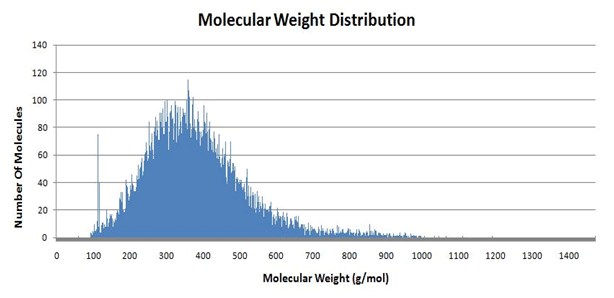Protein Identification Services
Protein Sample Preparation
Protein sample preparation service include:
- Tissue & cell homogenization
- Sample cleanup (remove DNA & RNA, s-s bond reduction, protein)
- Depletion of high-abundance proteins from samples, like plasma
- Protein extraction
- Protein purification
- Protein concentration
- Protein digestion
Advantage of our protein sample preparation service:
- Cutting-edge platform with ultrafiltration technology
- Experienced scientists dealing with various samples
- Optimized and quality control workflow to work with various samples
- Project design based on the properties of target proteins
Molecular Mass Determination Service
Our molecular weight analysis method include Mass Spectrometry (MS), offering accuracy of measurement over a wide molecular weight range, with minimal amount of sample. With our well-established platform, we promise accurate identification and monitoring of low intensity isoforms. Furthermore, any difference between theoretical and measured mass may be identified as potential modifications on the proteins.
Our comprehensive service and detailed reports will provide you with the number average molecular weight, weight average molecular weight (Mw), z-average molecular weights (Mz) and Polydispersity (Mw/Mn) on both single and multi-component polymer samples.
List of our molecular mass determination service:
- Number average molecular weight (Mn)
- Weight average molecular weight (Mw)
- Z-average molecular weights (Mz)
- Polydispersity (Mw/Mn) on both single and multi-component polymer samples
- Accurate molecular mass determination service (proteins with modifications, such as glycosylation, phosphorylation, etc.)
- Molecular mass distribution service

Protein Purity and Homogeneity Characterization
We provide a complete list of protein purity and homogeneity characterization services to detect contaminants, protein variants, isomers, mismatched S-S link, truncated proteins, degraded proteins, protein modifications, protein aggregates, and protein precursors.
Purity and integrity: SDS-PAGE, capillary electrophoresis, Zinc-reverse staining, glutaraldehyde-free modified silver staining, MALDI-TOF mass spectrometry.
Homogeneity assay: dynamic light scattering, UV-visible fluorescence spectroscopies, size-exclusion chromatography, static light scattering.
Our Technology Platforms:
- Capillary Electrophoresis Sodium Dodecyl Sulfate (CE-SDS)
- Sodium Dodecyl Sulfate Polyacrylamide Gel Electrophoresis (SDS-PAGE)
- Gel permeation chromatography (GPC)
- Size Exclusion Chromatography (SEC)
Sequence Analysis of Peptides or Proteins
Mass spectrometry:
Now a Days, the most commonly used technique for protein sequence analysis is mass spectrometry. Mass spectrometry is a highly efficient method for the accurate mass determination and characterization of proteins. Two mainly used mass spectrometers are electrospray ionization (ESI) and matrix-assisted laser desorption/ionization (MALDI), respectively. Basically, proteins are pretreated with digestive enzymes to be digested into small fragments, which are analyzed by mass spectrometers. Depends on the projects need, MALDI and ESI are two used as ionization source for ionizing peptide fragments. Usually, MALDI is more frequently used when dealing with large amount of samples. Peptide sequences are then obtained by analyzing the mass spectrum of each of the fragments, which together consist of the full-length protein sequence.
Application of protein sequencing service:
- Analysis of protein N-, or C-terminal signal sequence
- Protein N-, or C-terminal tags
- Post-translational modifications on N-, or C- terminal ends
Membrane Protein Identification
One-third of proteins encoded in genomes are hydrophobic membrane proteins, and their analysis by mass spectrometric methods is more difficult than the analysis of hydrophilic proteins. Many of the difficulties arise from their hydrophobicity and from the associated lack of procedures for purifying membrane proteins in a suitable form for mass spectrometric analysis. Usually, detergents are used to extract and purify membrane proteins, but they are incompatible with the protein ionization methods used in MS, and so they have to be removed from the purified protein (often by chromatography in organic solvents) before analysis can be undertaken. An alternative approach is to extract and fractionate the membrane proteins directly in organic solvents.


